-
Car Reviews
- All reviews
- Midsize SUVs
- Small cars
- Utes
- Small SUVs
- Large SUVs
- Large cars
- Sports SUVs
- Sports cars
- Vans
Latest reviews
- Car News
-
Car Comparisons
Latest comparisons
- Chasing Deals
With more than a dozen Chinese brands already in Oz, Chery has just added another one – Omoda, technology-savvy, pseudo-premium SUV brand sold alongside Jaecoo
In early 2023, Chery introduced the Omoda 5 – a vaguely coupe-like small SUV which appeared to buck the trend of other export markets by being branded as a Chery in Australia, not an Omoda.
Two years later, that car has now received a light facelift and has been renamed Chery C5 (or E5 for the electric version), leaving ‘Omoda’ free to serve its original purpose – as a slightly more upmarket brand from carmaker Chery, just like it always was in right-hand-drive markets such as the UK and New Zealand.
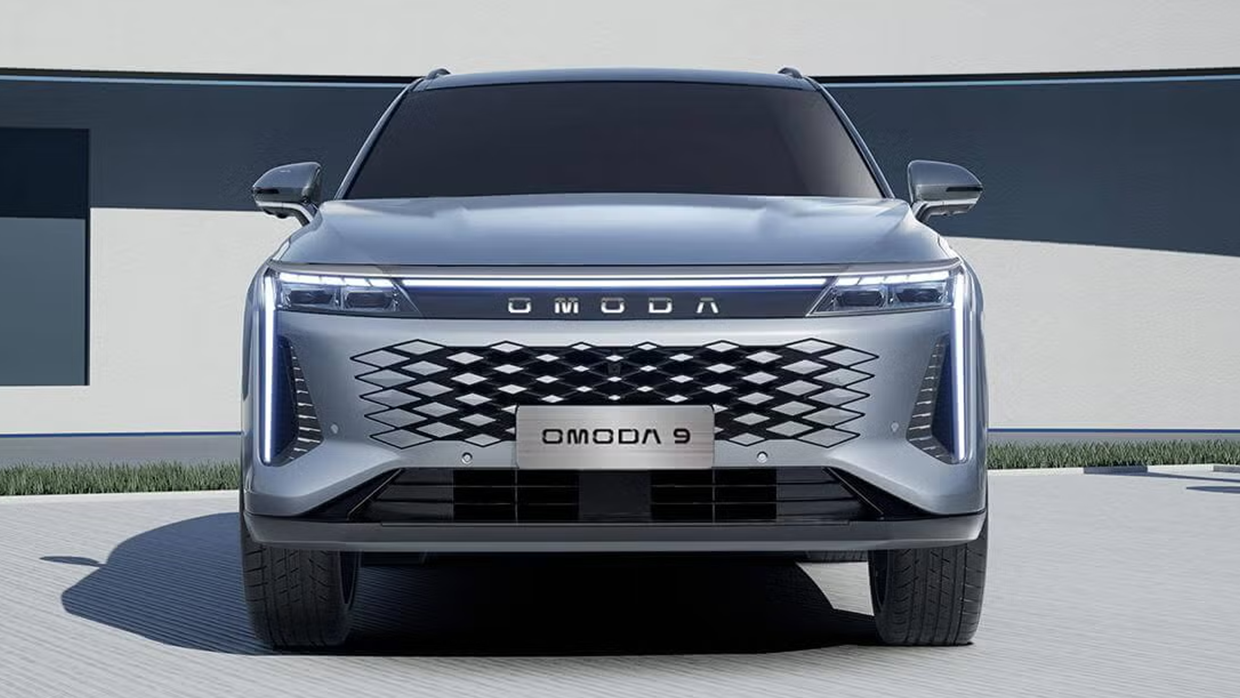
Following a global directive, Australia will now market Omoda-Jaecoo alongside each other, offering pseudo-premium model lines and more distinctive styling treatments compared to the bread-and-butter Cherys.
And the first fruit of that new strategic direction is the Omoda 9 – a large-ish, coupe-like SUV featuring a high-tech plug-in hybrid drivetrain offering an outstanding 145km of EV-only WLTP range.
Going forward, that means shared Omoda-Jaecoo dealerships and branding in Australia for the now four-month-old Jaecoo J7 medium SUV, the slightly newer Jaecoo J8 large SUV and this fresh-off-the-boat Omoda 9.
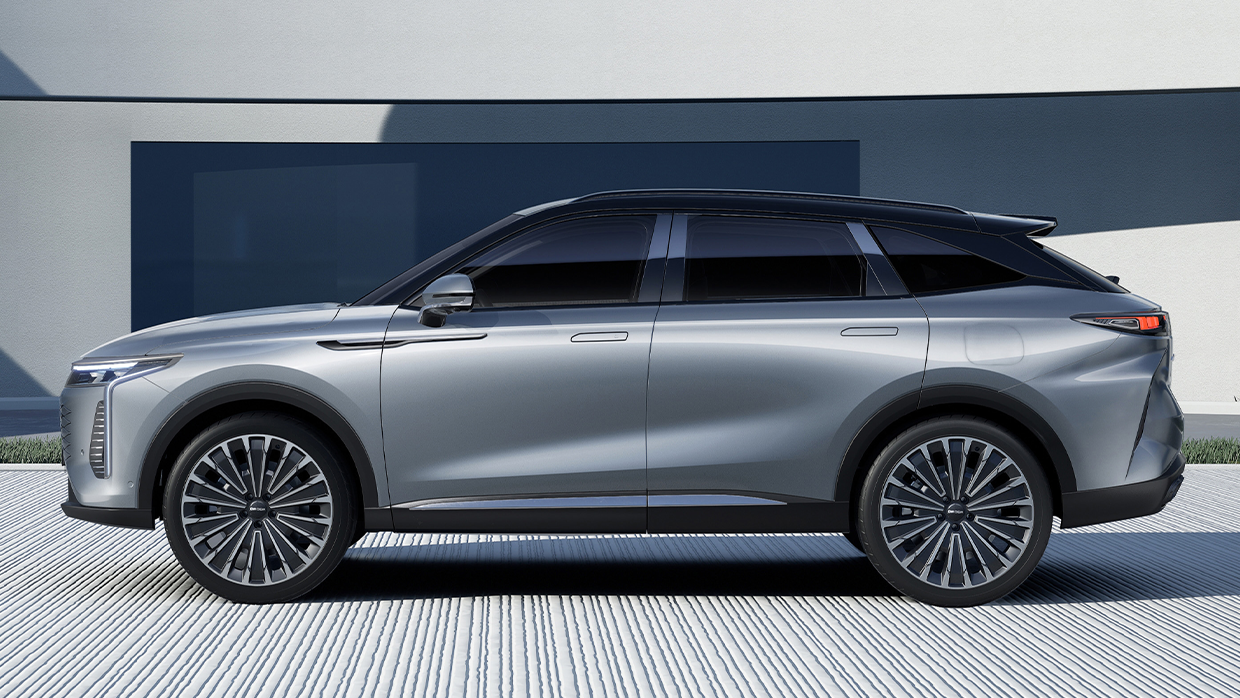
By Christmas, Omoda-Jaecoo plans to have around 50 Australian dealerships – some of which will be stand-alone and others that will be adjacent to an existing Chery dealership.
But back to the car. The Omoda 9 has been described as ‘new luxury’ – a technology-focused, slickly designed, slightly upscale SUV – whereas the Jaecoo SUVs are more ‘adventure’ vehicles, according to the Aussie marketing and product people, particularly the J7 Ridge AWD with its respectable off-road ability.
As such, the Omoda 9 will sold exclusively in plug-in hybrid form in Australia, not with the ICE option available elsewhere. And its ‘Super Hybrid’ PHEV system is a more complex, sophisticated and powerful system than that in other Jaecoo/Chery ‘Super Hybrid’ models – again, giving the Omoda 9 a premium point of difference.
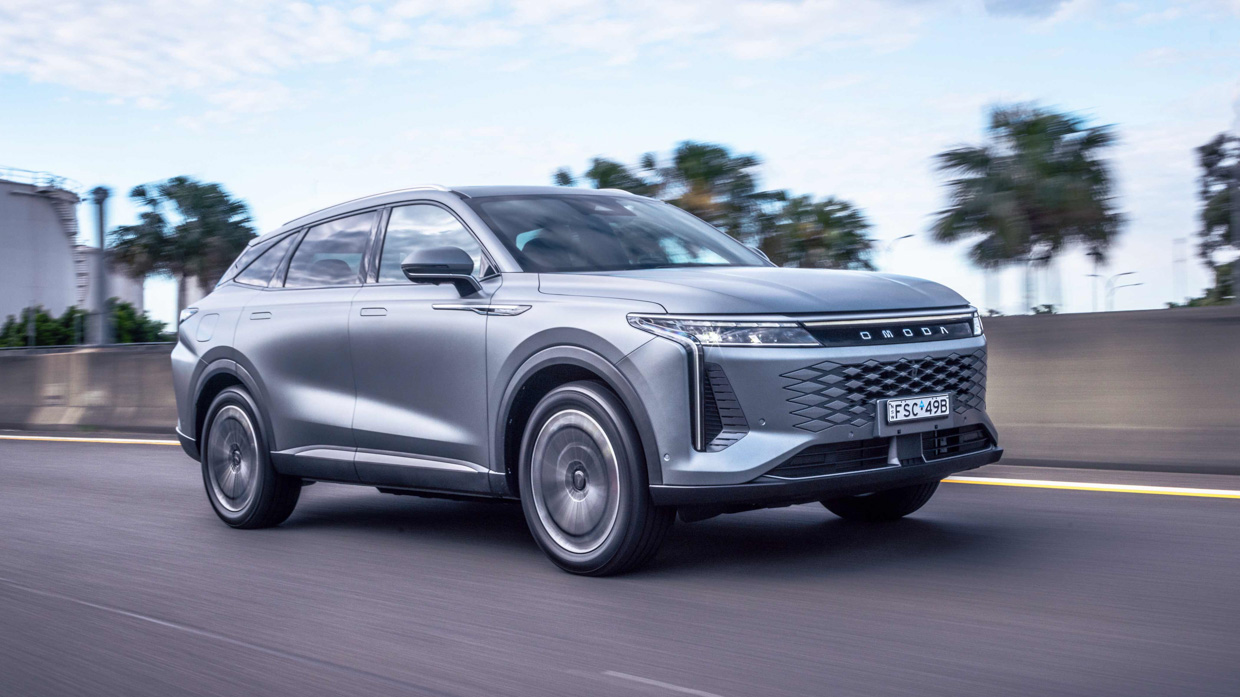
Size wise, the Omoda 9 is essentially a coupe-SUV alternative to the wagon-shaped Jaecoo J8 SUV. Measuring 4775mm long, 1920mm wide and 1671mm tall, riding on a 2800mm wheelbase, the Omoda 9 is 45mm shorter, 39mm lower, 10mm narrower, and 20mm shorter in wheelbase length than the Jaecoo J8.
It also loses out slightly for comparable boot volume – 738 litres to the roof in the J8 and 660 litres in the sleeker Omoda 9, each measured behind the second row because both SUVs are only available in five-seat form.
But the Omoda 9 looks good in the flesh. It’s an elegantly proportioned SUV featuring classy 20-inch alloys (with Michelin e-Primacy 245/50R20 tyres), and its LED lighting signatures are quite striking – the front lights featuring sequential indicators.
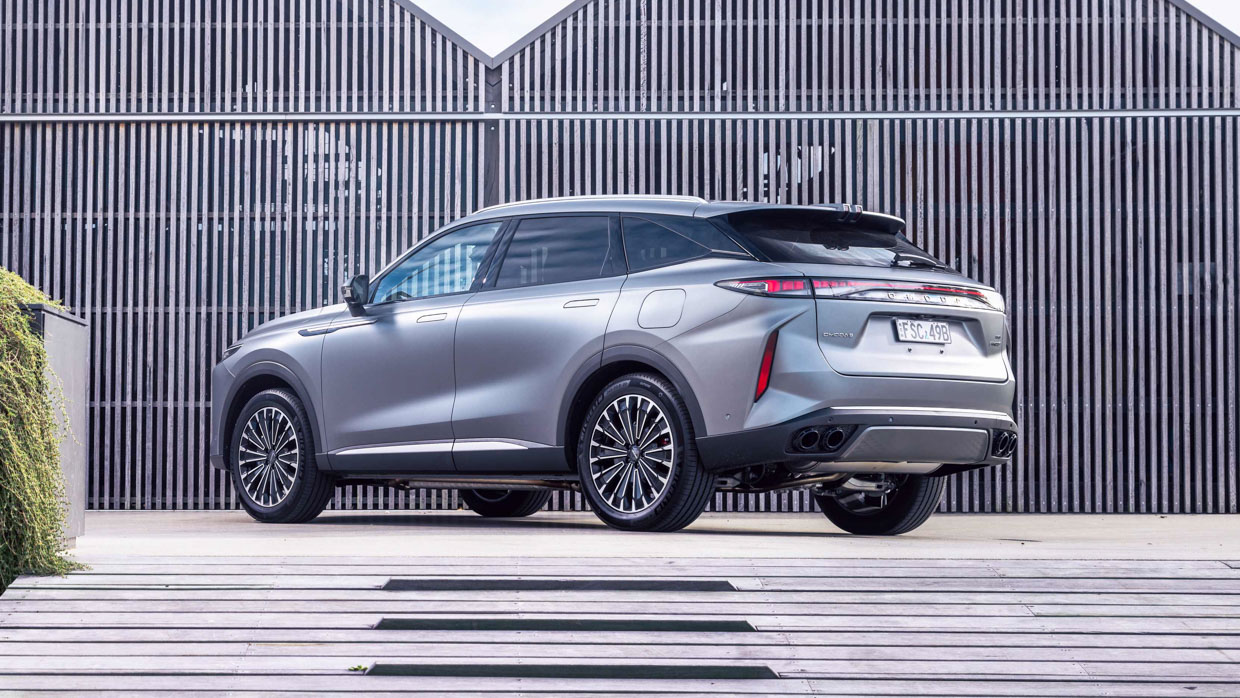
Pop-out door handles (ala Jaecoo J7, inspired by the Range Rover Velar) amp its slick factor, though opting for four huge, non-functional exhaust outlets is a jarring aberration an enviro vehicle.
Where the Omoda 9 asserts its positioning is by having three electric motors, as well as a 105kW/215Nm 1.5-litre turbo-petrol four-cylinder engine – channelled by a complex three-speed dedicated hybrid transmission (DHT), not the single-speed unit that’s fitted in other SHS Chery Group models.
The two front electric motors produce 75kW/170Nm and 90kW/220Nm, while the rear-axle electric motor is good for 175kW/310Nm – meaning the Omoda is AWD, not really an off-roady 4WD.
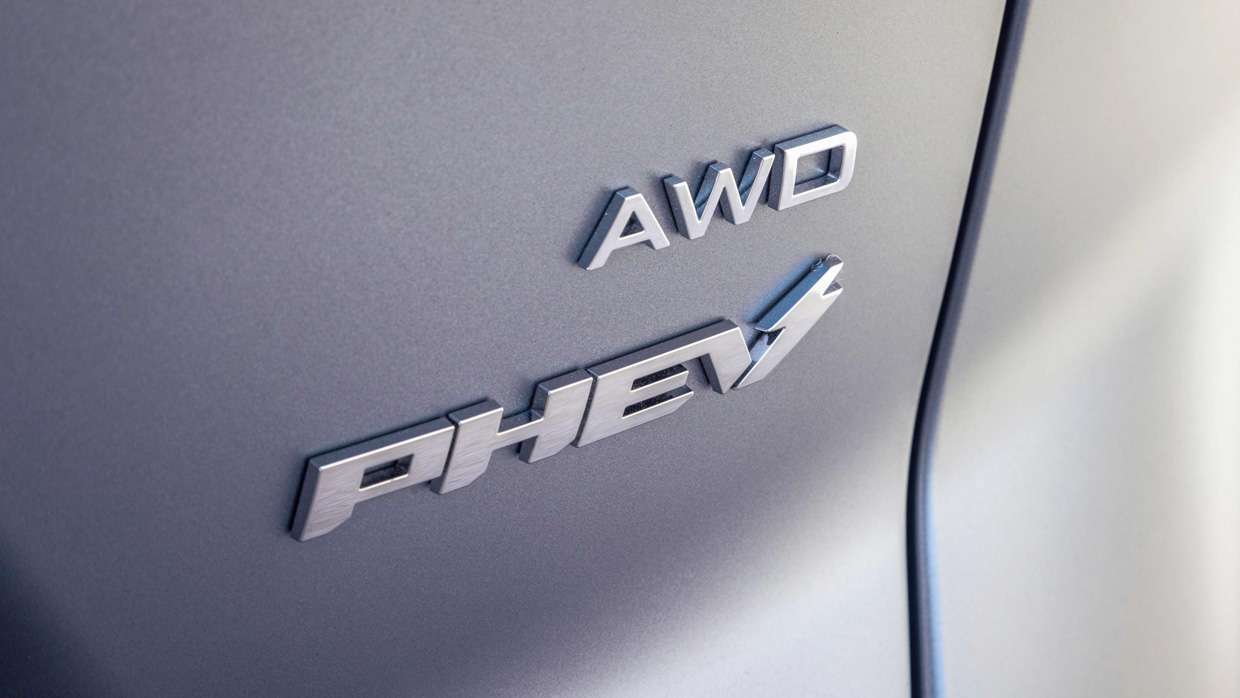
Impressive system outputs of 395kW and 620Nm give the 2203kg Omoda 9 enough oomph to slay 0-100km/h in a claimed 4.9 seconds, and during our limited time with the car, the slick DHT ’box shifted seamlessly between the various electric motors, the combustion engine, and everything together.
Over 100km of driving, with the drive mode in HEV (Hybrid), not just EV, the engine only chimed in once, during a foot-flat acceleration test to beyond 100km/h. And even then, the electric motors did most of the work before the petrol engine smoothly and quietly appeared in the background.
Given the Omoda 9’s substantial 145km EV-only range, you can essentially treat the petrol engine as a range extender, though with a maximum DC charge rate of just 70kW, the Omoda 9’s 34kWh battery will need 25mins to go from 30-80 percent on a DC charge, or 5.5 hours to go 30-100 percent on a 6.6kW AC charge.
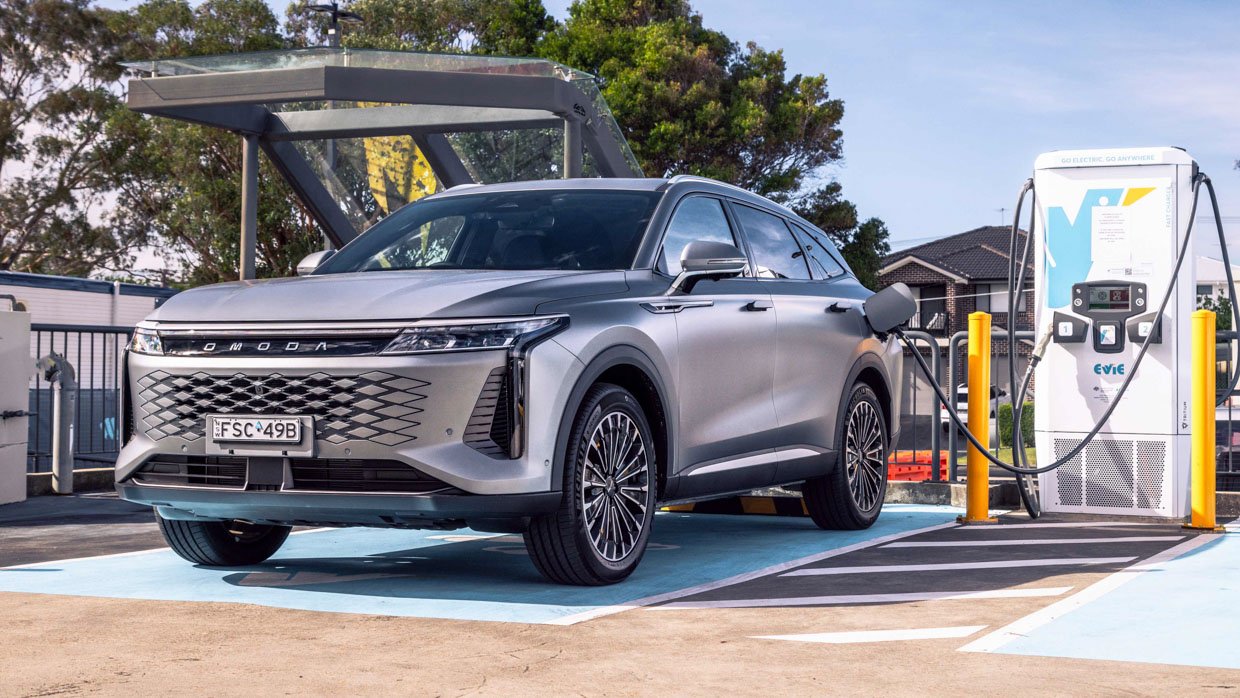
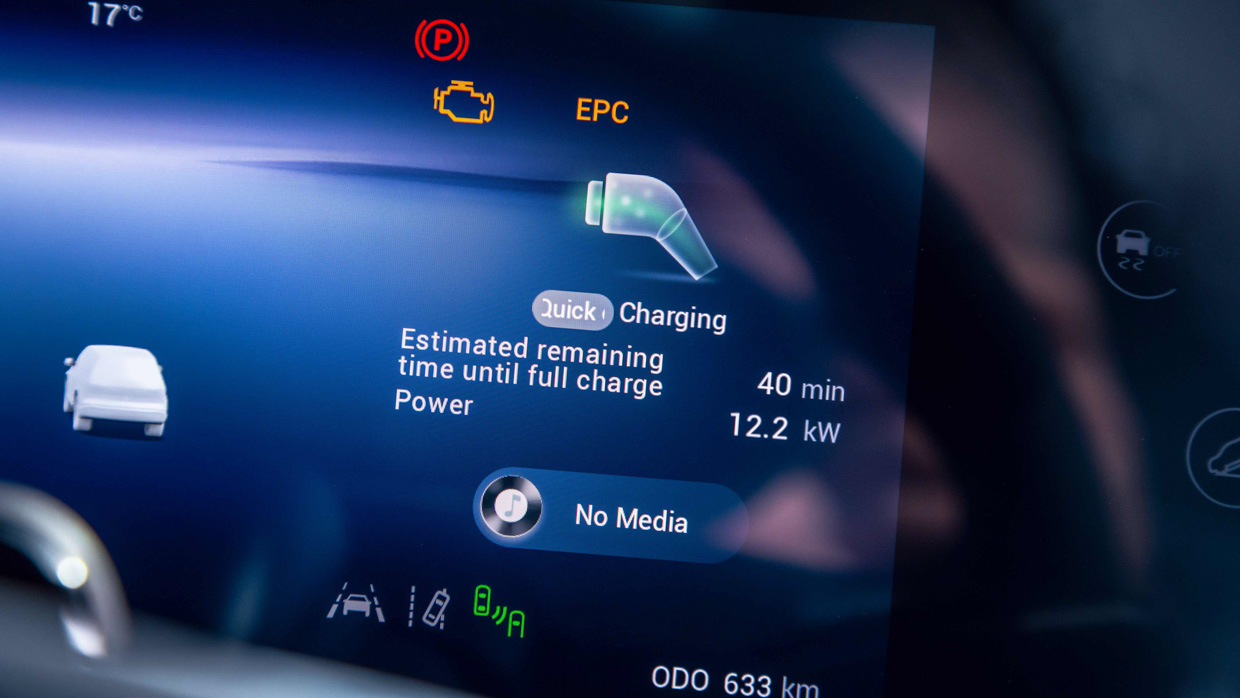
There are three levels of regen braking, though even the strongest setting doesn’t slow the Omoda 9 like a Nissan e-Power’s impressive e-pedal mode, let alone a Hyundai–Kia EV’s i-Pedal. But its adaptively damped suspension with multi-link IRS is surprisingly accomplished at absorbing urban road scars, despite its 20-inch wheels.
We’ll need to spend more time with the Omoda on properly challenging country roads to know that for sure, but it’s in the area of ride quality that the Omoda 9 feels at its most luxurious, backed by that impressively slick and rapid powertrain.
However, the Omoda 9 isn’t quite as sorted as it could be when changing direction. Hauling out of a tight, downhill left-hander, its acceleration and power-down poise felt unexpectedly great, though at other times it seemed to lack fluency and introduced some understeer in more uneven corners.
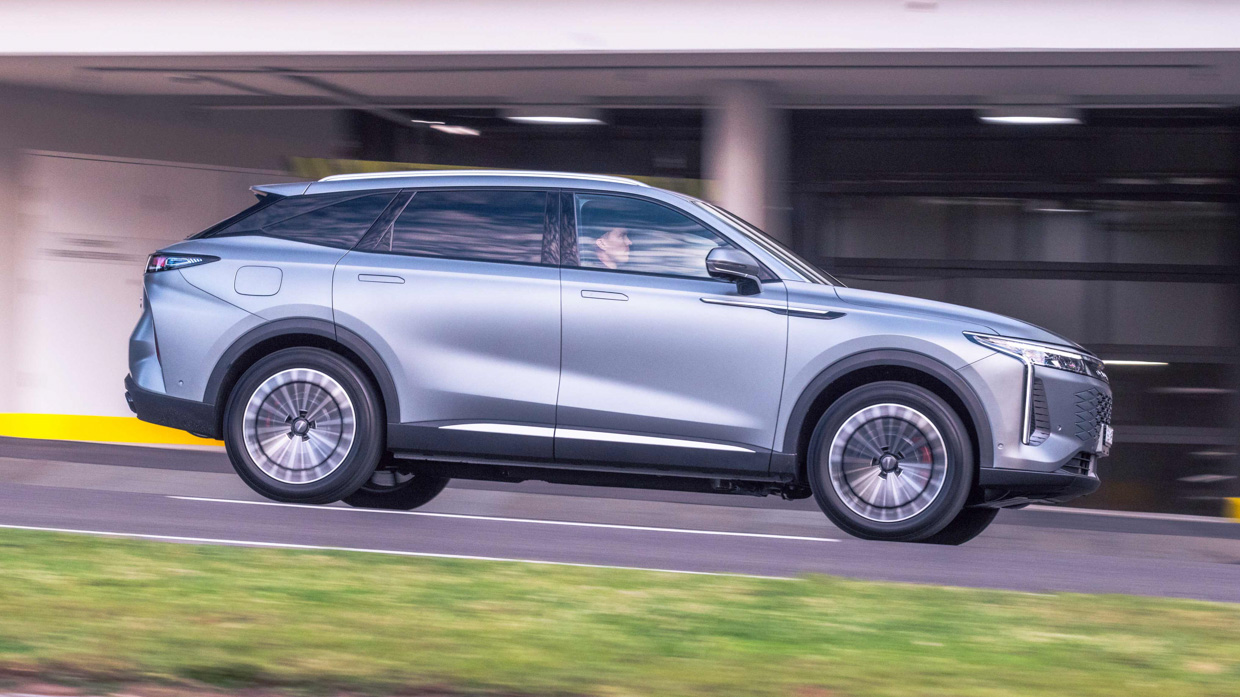
Some of that balance inconsistency could be due to the steering, which is numb and lifeless in feel, making finite precision difficult – even with Sport mode engaged. A comprehensive electric steering retune should be top of the priority list for 2026, though it doesn’t detract from the Omoda 9’s ability to waft comfortably through the suburbs.
Undermining that talent somewhat is the Omoda 9’s front seats. The door-mounted, Mercedes-Benz knock-off electric seat controls possess no height or tilt adjustment whatsoever, and while the driver gets an electric under-thigh extender, it achieves almost nothing when you can’t adjust the seat angle – unless you’re a very small human.
Otherwise, the front seat shape is reasonable and there’s leather-faced upholstery, ventilation, and heating all round (including the steering wheel and outer rear positions). And the rear bench is comfortable for two, with plenty of leg and toe room, though the door-mounted rear seat controls are just tinsel – the base does nothing, the backrest moves only slightly.
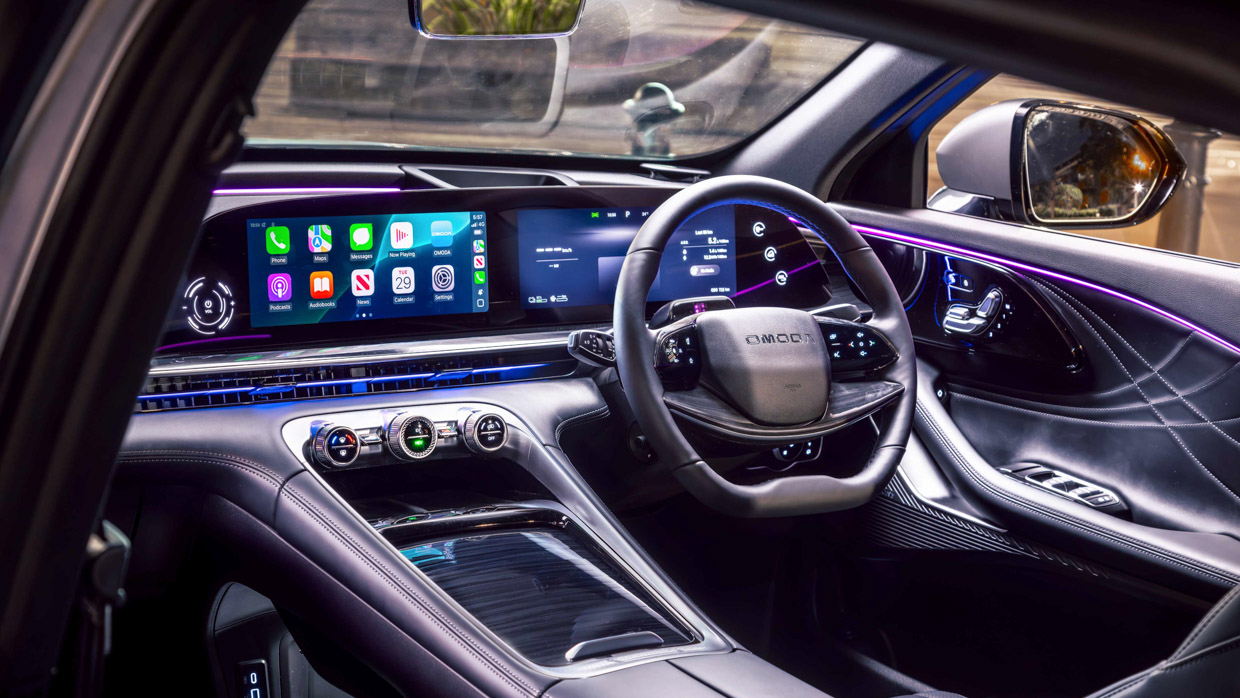

The rest of the cabin maintains a Mercedes-Benz styling inspiration, evident in the Omoda 9’s round metal speaker grilles, ambient lighting design and some of the switchgear and centre-console layout. And like its German mentor, it’s all slightly overdone – in contrast to the (mostly) restrained elegance of the Omoda 9’s exterior.
Overall quality is acceptable and functionality is decent … until you get to the 12.3-inch multimedia system. It often ignores inputs, meaning you need to press/tap multiple times before the screen responds, and we couldn’t find the treble/bass/balance controls for the 14-speaker Sony stereo, after at least 30 minutes of patient prodding.
Despite that failure, the staging and sound quality seem impressively strong, and there’s even a pair of Sony speakers in the driver’s headrest.
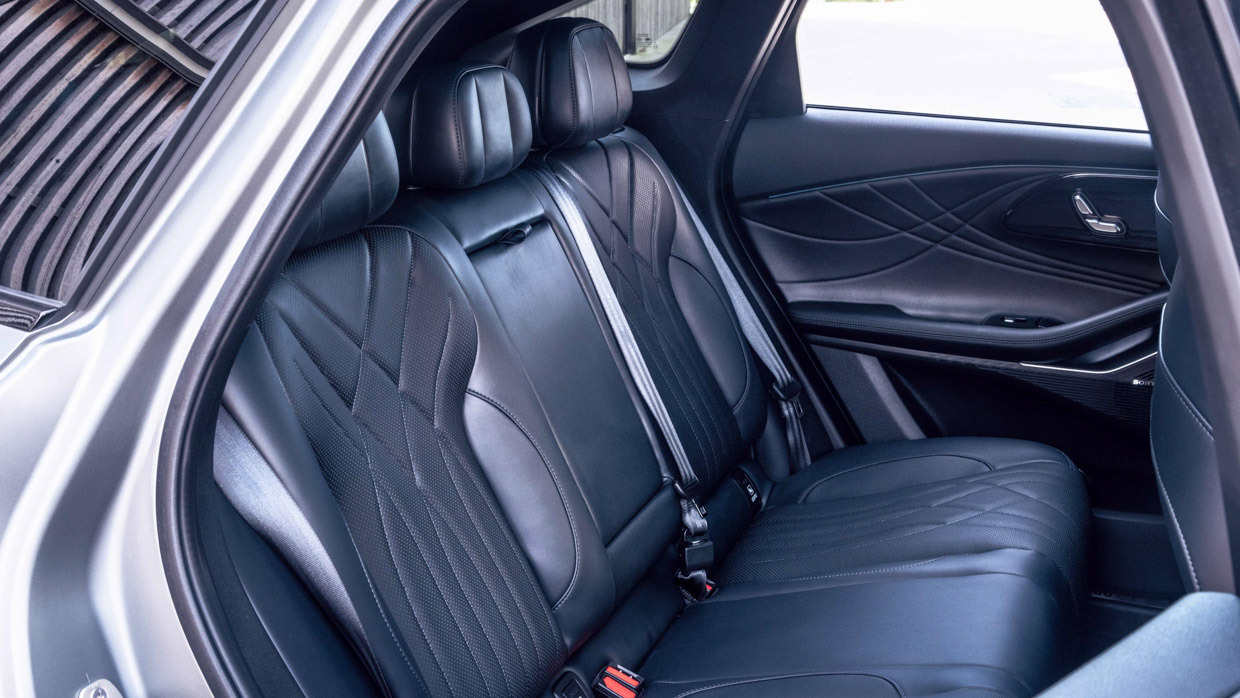
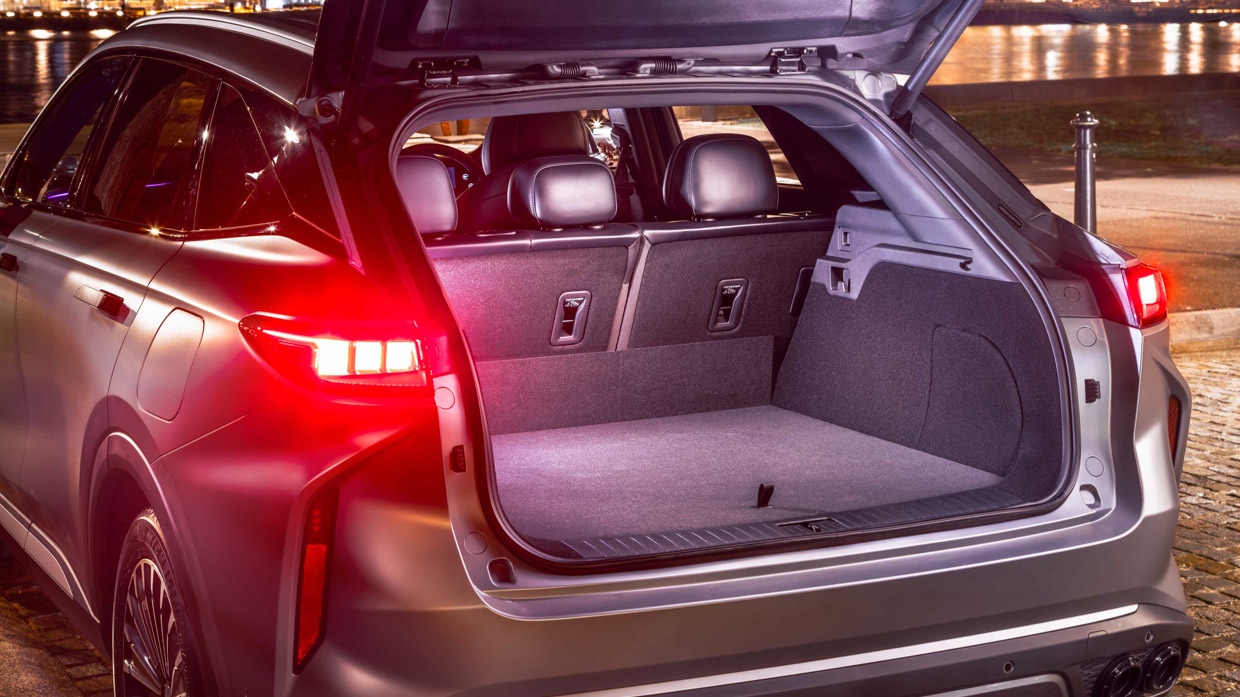
Aside from a rather pleasant three-fragrance cabin-scent system, the rest of the Omoda 9 Virtue’s equipment (yep, that’s the variant name!) is decent but unexciting.
There’s puddle lighting, electric steering adjustment, auto park, a 360-degree camera, a head-up display, a basic 12.3-inch driver’s screen, a 50W wireless charger, wireless Apple CarPlay/Android Auto, a built-in dashcam, a panoramic sunroof, an electric tailgate (opening to a spacious boot), and an optional matte paint finish (Shadow Grey) among four hues.
The Omoda 9 also shares Jaecoo’s eight-year/unlimited-kilometre warranty, plus eight years’ roadside assistance and eight years’ capped-price servicing. Recommended service intervals are every 12 months or 15,000km, with the five-year cost being $1895.
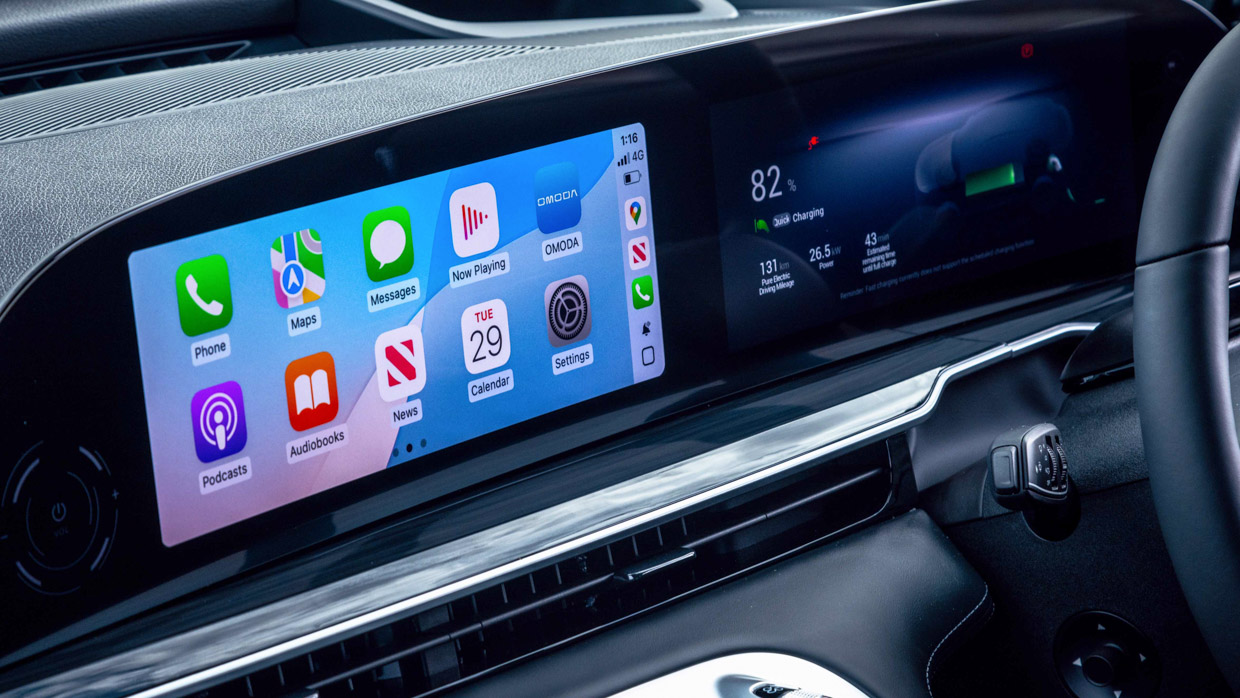
There’s the expected active-safety electronics, as well as eight airbags, adaptive cruise, front/side/rear parking sensors and rear cross-traffic AEB.
The operation of everything seemed relatively non-threatening during our launch drive, though that isn’t to say that real life won’t expose several chinks here. At least there’s a swipe-down shortcut screen for the multimedia to save any annoying safety gadgets you may want disabled.
So is the rather handsome Omoda 9 a genuine force to be reckoned with when it comes to mainstream-brand plug-in-hybrid SUVs?
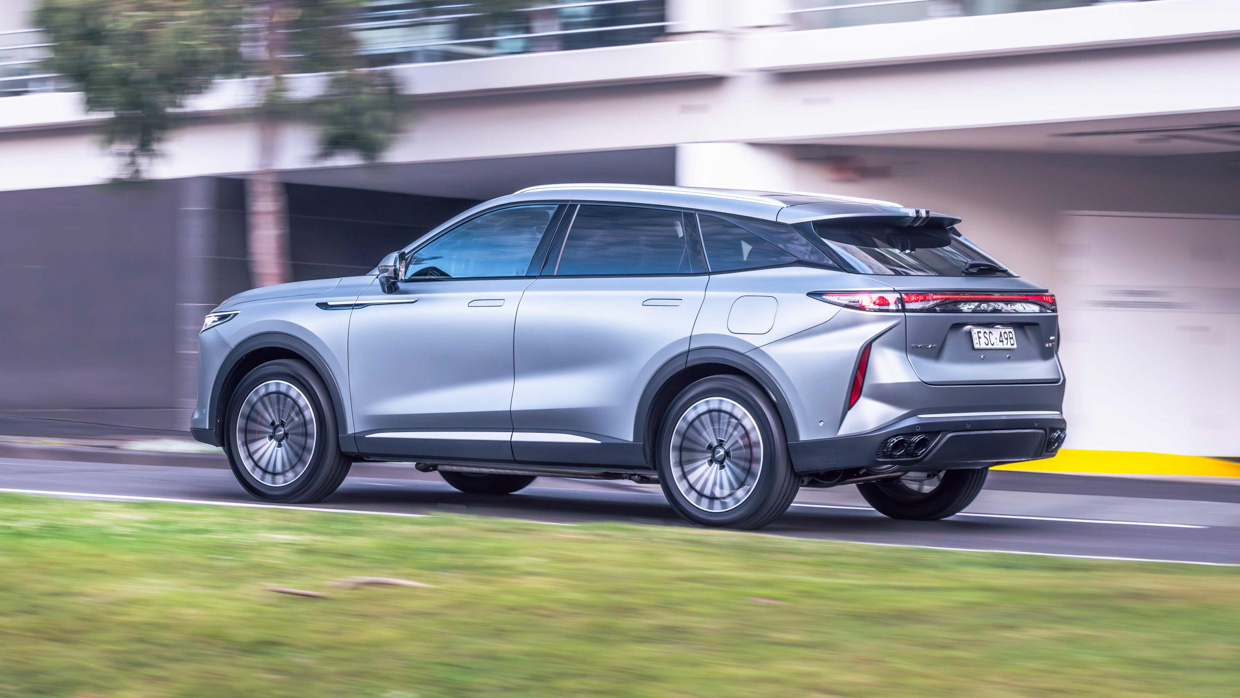
On first inspection, it appears to be a clear step up in sophistication and comfort over a $53K BYD Sealion 6 Premium plug-in hybrid, and with such a fantastic claimed EV-only range, as well as a comfy ride and impressive powertrain, the $62K Omoda 9 appears to be good value, too, though surely it’s only a matter of time before that sticker is driveaway.
Indeed, compared to a Mitsubishi Outlander PHEV ($57K to $74K), Mazda CX-60 P50e ($64K to $80K) or Kia Sorento GT-Line PHEV ($85K) – all of which offer barely half of the Omoda 9’s electric range – this Chinese plug-in hybrid SUV really starts to seem like a bit of a bargain, even though it still needs quite a bit of finessing to be a genuinely good car.
Key specs (as tested)
About Chasing cars
Chasing Cars reviews are 100% independent.
Because we are powered by Budget Direct Insurance, we don’t receive advertising or sales revenue from car manufacturers.
We’re truly independent – giving you Australia’s best car reviews.
The estimate provided does not take into account your personal circumstances but is intended to give a general indication of the cost of insurance, in order to obtain a complete quote, please visit www.budgetdirect.com.au. Estimate includes 15%^ online discount.
^Conditions Apply
Budget Direct Insurance arranged by Auto & General Services Pty Ltd ACN 003 617 909(AGS) AFSL 241 411, for and on behalf of the insurer, Auto & General Insurance Company Limited(ABN 42 111 586 353, AFSL 285 571).Because we don’t know your financial needs, we can’t advise you if this insurance will suit you. You should consider your needs and the Product Disclosure Statement before making a decision to buy insurance. Terms and conditions apply.
Indicative quote based on assumptions including postcode , 40 year old male with no offences, licence suspensions or claims in the last 5 years, a NCD Rating 1 and no younger drivers listed. White car, driven up to 10,000kms a year, unfinanced, with no modifications, factory options and/or non-standard accessories, private use only and garaged at night.
^Online Discounts Terms & Conditions
1. Discounts apply to the premium paid for a new Budget Direct Gold Comprehensive Car Insurance, Third Party Property Only or Third Party Property, Fire & Theft Insurance policy initiated online on or after 29 March 2017. Discounts do not apply to optional Roadside Assistance.
2. Discounts do not apply to any renewal offer of insurance.
3. Discounts only apply to the insurance portion of the premium. Discounts are applied before government charges, taxes, levies and fees, including instalment processing fees (as applicable). The full extent of discounts may therefore be impacted.
4. We reserve the right to change the offer without notice.